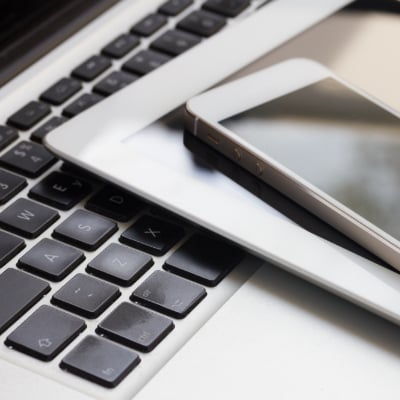How to Keep BYOD from Impacting Security

Bring Your Own Device, or BYOD, is a common approach for businesses that want to take advantage of mobile technology to kickstart productivity. Instead of supplying each individual employee with company-owned devices, businesses allow employees to use their own devices for work-related purposes. While this is great on the budget, it’s only really effective (and safe) if the employee prioritizes security on their devices; otherwise, it’s a liability.
The Concept of Threat Surface Level
BYOD is great for improving productivity, but it comes at the cost of greater security risks associated with increasing the threat surface level of your business.
Simply put, the more devices you have on your network, and the more devices that have access to your company’s resources, the greater the odds of something bad happening to them. It doesn’t matter what kind of devices they are; even a smartwatch could pose a risk to your business, if it’s connected to the Internet and it has access to your network. This is why BYOD is only truly effective as an operations model if you have policies and procedures in place to secure these devices.
A sound BYOD strategy is the key to making the most of employee-owned devices so you can carry out operations without fear.
Access Control Challenges
Half the battle of BYOD is access control, meaning who has access to what information and on what devices.
We’ll say right now that no employee, not even upper management or executives, should have access to everything. Case in point: sensitive information managed by your human resources team, like Social Security numbers. The fewer people who have access to sensitive information, the better the odds that data will remain secure.
Smart use of access control features that limit access based on job role and duties performed will go a long way toward protecting your business (and its assets).
The Key Components of a BYOD Policy
There are, of course, other components to a BYOD policy, including blacklisting/whitelisting apps and remote wiping.
When you blacklist and whitelist apps, you’re telling employees that these are tools approved for work purposes (and which ones aren’t). This prevents them from using apps that IT hasn’t approved, or those that could have malicious intentions. Remote wiping lets you wipe data on any stolen or compromised devices, meaning that even under the worst circumstances, you have one last failsafe to protect your business.
White Mountain IT Services can help you implement any of the above tools to keep your business and its mobile devices secure. Learn more by calling us today at (603) 889-0800.


